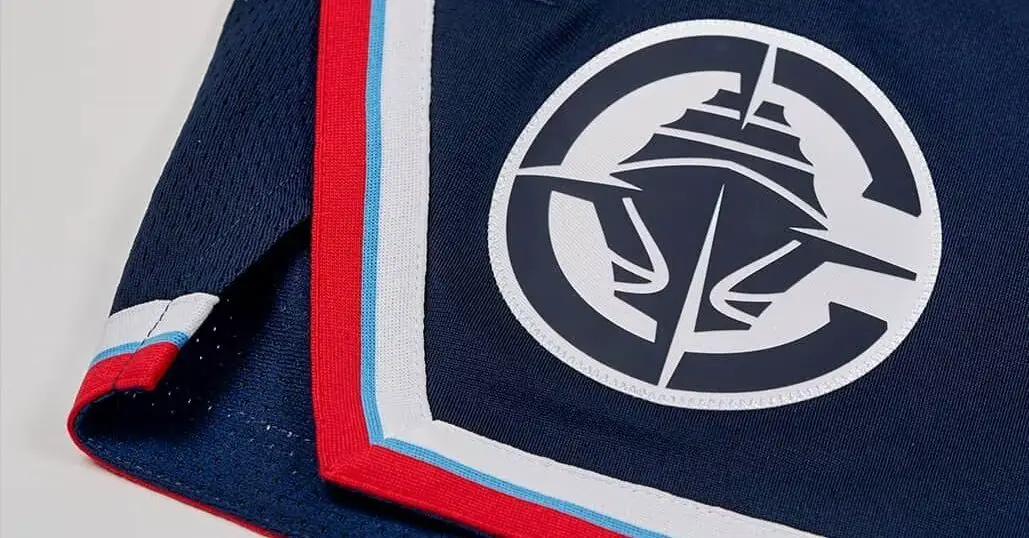The Los Angeles Clippers have struggled for years to shed their reputation as one of the N.B.A.’s most woebegone franchises. Operating in a perennial shadow cast by the Lakers, the Clippers actually have a decent team this season, with hopes of winning their first championship.
But the job of transforming their image has been no easy task, and the Clippers last week announced their latest crack at it: a new logo that, defying conventional wisdom, reaches into their past.
The logo, which the team will begin using next season when it moves into a new arena in nearby Inglewood, Calif., depicts the silhouette of an oncoming ship. The Clippers describe it as “a nod to the team’s origins” in San Diego, where the franchise was based in the late 1970s and early ’80s. The hull of the ship features the seams of a basketball and is framed by a compass.
The art and design site Creative Bloq assessed the new logo as “an instant classic” that honors the team’s past “while still feeling fresh.” An editor for SB Nation wrote that the Clippers had “shed their loser branding, and finally look like a real N.B.A. team.”
Others were not so enamored. Fast Company described the new look as “confusing” and a result of “what happens when logos try to do too much: Is it a ship? Is it a compass? In fact, it’s both.” Craig Calcaterra, who has a daily baseball, news and culture newsletter, quoted another observation — that the logo appeared to show a cruise liner in someone’s cross hairs.
“Now I can’t unsee it,” Mr. Calcaterra wrote on the social platform X.
Given their history, the Clippers are easy fodder for sports pundits. There were suggestions that the team could have rebranded as, say, the animated paper clip from an outdated version of Microsoft Office, or maybe as a pair of nail clippers.
Michael Brennan, a New York-based designer who was not involved in the process, said that the job of creating a new logo for a sports team can often feel like a losing battle.
“I think some people are going to be resistant out of the gate, no matter what,” Mr. Brennan said in an interview. “But this, to me, feels like it has a lot more staying power than previous versions.”
The Clippers were originally founded in 1970 as the Buffalo Braves, and had some modest success before the franchise relocated to Southern California in 1978.
There, the team was rebranded as the San Diego Clippers, with a fresh logo to boot: a trio of triangles that evoked sleek sailing masts on the water. The team, unfortunately, was a disaster, staggering through five straight losing seasons before Donald Sterling, who was then the team’s owner, moved the Clippers to Los Angeles in 1984 without seeking the approval of the N.B.A.
In Los Angeles, the Clippers remained a troubled franchise, going 21 seasons without winning a playoff series. Their primary logo was equally forgettable: the name of the team inside of a streaking basketball, which was presumably a pass being thrown out of bounds. The team was almost synonymous with dysfunction, and that was before the N.B.A. forced Mr. Sterling to sell the team in 2014 after he was recorded making racist comments.
Steve Ballmer, the team’s new owner, almost immediately had the logo revamped — a basketball with a big blue “C” and an “LA” inside of it — but it hardly seemed like an upgrade. That logo, which will be retired after this season, has about as much personality as a slab of concrete.
And while the Clippers have been competitive in recent seasons, they continue to face some of the same obstacles — namely, making more of an imprint in a city long dominated by the Lakers. Adding to the challenge, the Clippers and the Lakers have played in the same downtown arena since 1999.
That will change next season when the Clippers relocate to Inglewood in the Intuit Dome, a building that they will be able to call their own. The imminent move has also presented the team with another shot at a rebrand — one that it can only hope sticks.
Reaction to the inspiration for the new logo, though, has been mixed. Claire Bula, a lecturer in graphic design at Boston University, questioned why fans of the team would care about its fleeting ties to San Diego, a city from which the Clippers absconded about 40 years ago.
“When you think of nautical heritage, it doesn’t feel super connected to the modern Clippers organization,” Ms. Bula said in an interview, adding, “This looks more like the logo for a luxury yacht company than a basketball team.”
Mr. Brennan, on the other hand, said the new logo was “really thoughtful” and had a “majestic” vibe.
But sports fans can be a fickle bunch, and the craftsmanship of a well-executed design may not even matter.
“Some of my favorite logos aren’t necessarily good,” Mr. Brennan said. “I just have an emotional connection to those teams.”

